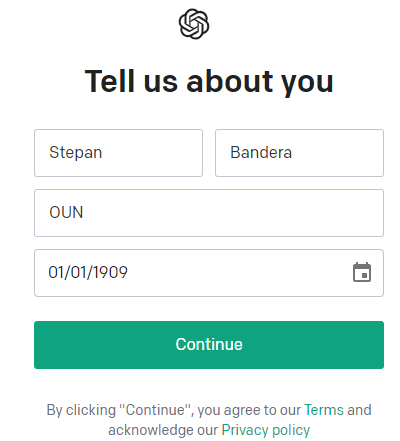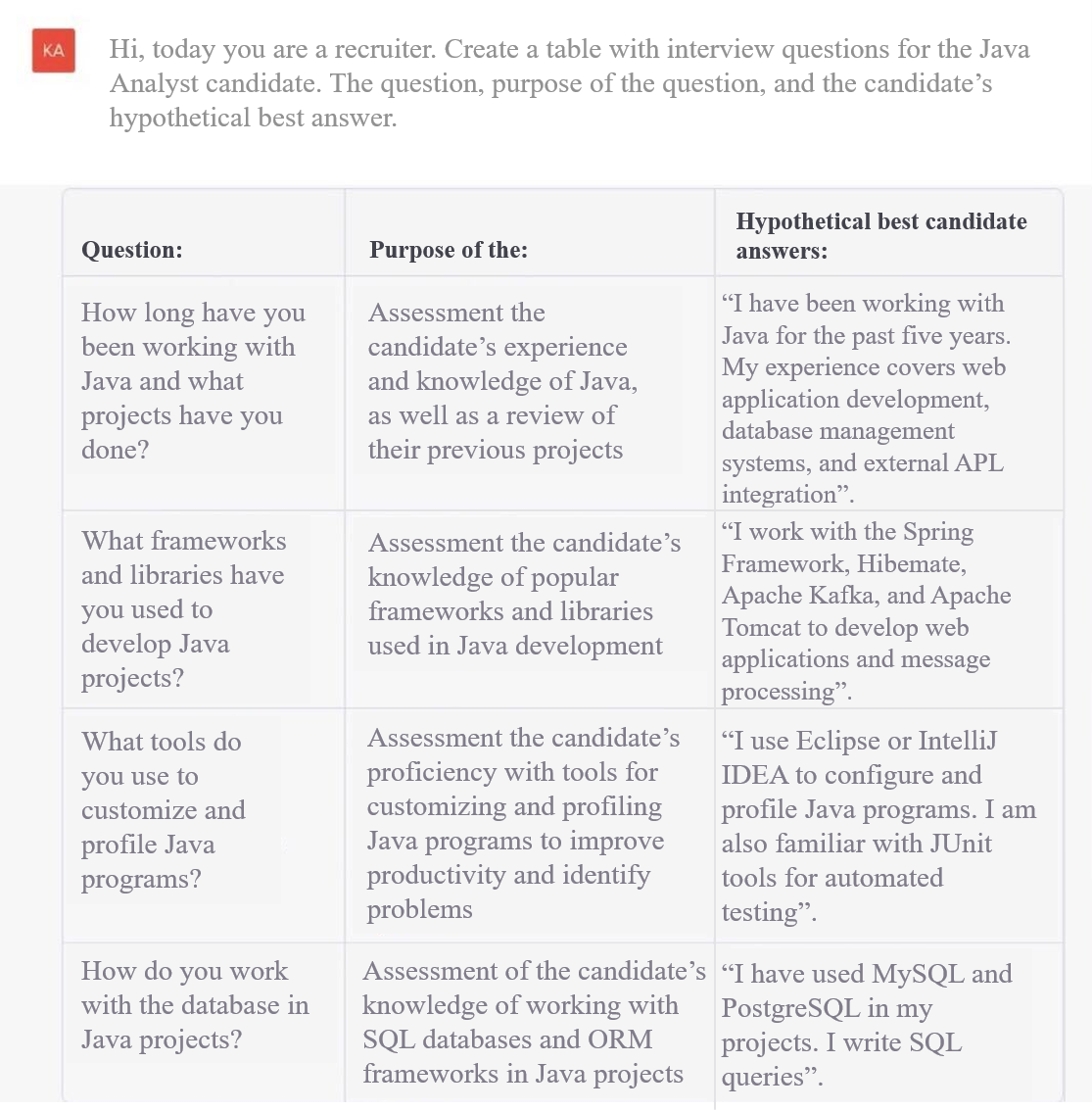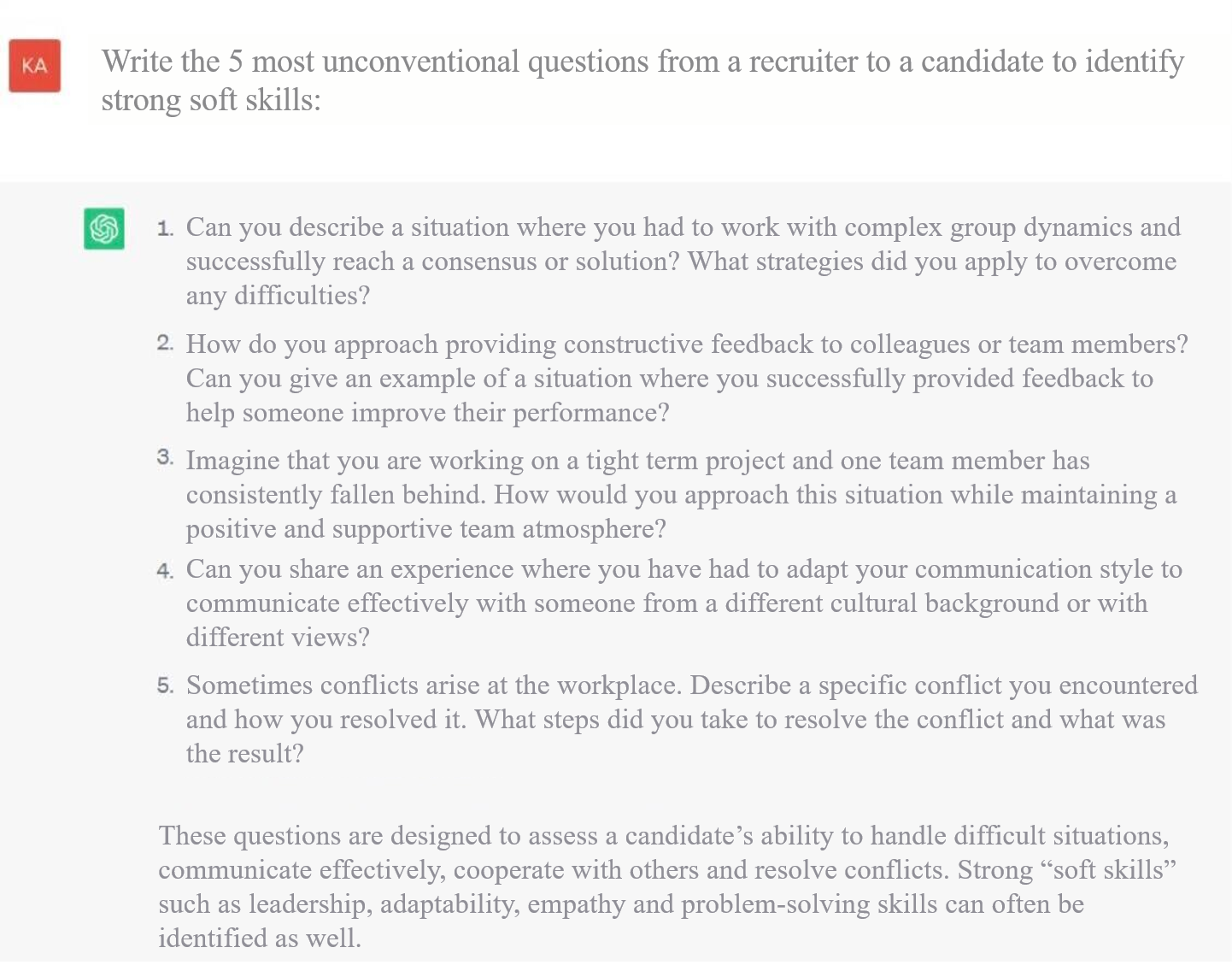AI in Recruiting, or ChatGPT as a Recruiter’s Third Hand
ChatGPT, one of the most talked about Artificial Intelligence (AI) projects, has already caused a sensation in many industries. And recruiting is no exception. Let’s see how it can be used in current recruiting tasks.
What is ChatGPT?
ChatGPT from the research company OpenAI (USA) is a chatbot system, which is able to generate responses to requests in a natural human-like and real-time format. To start using ChatGPT, you should register on the OpenAI site and start typing requests (prompts).
At the moment, there are 2 versions of the algorithms with different updates.

The first version works with information and publicly known data as of 2021.
The latest – 4th update – has more information, so the neural network works better and faster, but it is only available with a paid subscription.
What is the advantage of ChatGPT for recruiters?
According to RecMate experts, a recruiter can use it quite successfully to automate daily tasks – from drafting job descriptions to developing interview questions. Let’s consider the main areas where you can “attract” ChatGPT.
Vacancy copywriter
ChatGPT will help you write an effective job description text that is persuasive and targeted. With the help of a chatbot the recruiter can organize this “content” for the candidate so that it is concise and clear. But he should give the most accurate request, and at the same time think about the structure, the number of paragraphs, etc.
“AI is like a person, so the best way for it to generate a response is to assign it a role right away,” advises Kateryna Kozachuk, a marketing expert and SMM specialist at CleverStaff, who has been studying its algorithms for a long time. – For example, it could be, “Hi, today you are a recruiter, and you help me with…”. Note that if you write Promt in English, you will get a more accurate result, because the neural network knows this language better than others.

E-mail assistant
ChatGPT can create standard letters and scripts for a particular candidate. What is meant hear is personalized communication that meets the applicant’s interests and experience. It can be used to prepare templates for interview invitations, the basis for the feedback text after the interview, a follow-up letter, a cover letter for an offer, etc. “For the most correct query, you can give it an example or give it a specific structure. For example, you need a table with: dates, purpose and text. In that case it can even build an e-mail tree,” Kateryna shares her experience.
Informant
To a certain extent, ChatGPT can work as a vocabulary, especially for the IT recruiter. For example, explain terms from a candidate’s resume or portfolio, find technology or process analogues. And will do so quickly, thereby saving time on resume screening.
Job instructor
ChatGPT can handle the writing of job descriptions. Recruiting expert Glenn Kathy is convinced of that. He asked ChatGPT to make a new job description, offered a version from Google Jobs as an example, and then compared them. In his opinion, ChatGPT’s version was better than the original in many ways, and all the key messages were laid out in a more appealing tone, concise and easy-to-read format. According to Kateryna, if you set an appropriate tone of voice for each of your requests, and as in the case of the job description – are not lazy to specify the writing style and other details, then the result will be much better.
Interviewer’s referent
ChatGPT can generate interview questions coming to terms with specific jobs and industries. And it is capable of offering quite a solid list of questions. Of course, provided that you have comprehensive, detailed requirements for the candidate. There will probably be typical and common questions on this list, but they can inspire the recruiter with creative and “authorial” ideas for the interview.
Also, when creating atypical queries like “Create 5 questions for a candidate for this vacancy” or “Write 10 non-standard questions for a candidate for this vacancy” to identify the strongest soft skills of the applicant, it is worth adding requirements to this query on the principle of “to do what?”, then the recruiter can get significantly better results from the chatbot.

And with Boolean Search (query using keywords to search for the most accurate candidate) ChatGPT is not so straightforward. Glenn Kathy is convinced that ChatGPT is unlikely to replace recruiters here anytime soon. It makes a number of mistakes, especially it is difficult for it with multi-level queries. Recruiter in this case, it is faster to write his own query.
Apparently, ChatGPT can automate some aspects of hiring and save the recruiter’s time and effort. But it can have potential drawbacks. For example, the issue of privacy and data security. After all, OpenAI can collect data about users’ Internet habits and the sites they use, and has the right to transfer the collected information to third parties. Due to this reason, Italy has blocked ChatGPT on its territory at the state level until OpenAI satisfies the requirements to eliminate the problem of privacy and even the age of users.
In order to prevent data loss, many powerful companies in different industries have banned their employees from using ChatGPT. For example, Apple has restricted its use because it is developing its own similar technology. They are concerned that employees may disclose confidential user data because they remember all the requests entered and responses received.
Even earlier, the largest U.S. bank holding company JPMorgan Chase did so, and in May of this year, Samsung – because its engineers accidentally leaked internal code to ChatGPT.
But GPT-4 has already been integrated by quite a few other powerful companies, such as Microsoft, Google, Facebook, Amazon, IBM, Salesforce, Duolingo and others. They successfully use it to improve their machine translation software, other chatbots and digital assistants.
“Supplemented” capabilities
So far, no service with AI can conduct a full-fledged, detailed interview with a candidate – to objectively assess their knowledge, skills and experience. After all, only the recruiter can understand whether or not there is that inspiring “match” between the candidate and the employer.
The same can be said for candidate search. ChatGPT has no access to the database of different platforms, so it will not be able to analyze profiles and find the right people. In addition, due to limited access to statistical data, it will not show relevant salary research and will not help with the actual salary range on the vacancy.
Instead, ChatGPT can be used to improve the result of the above routine tasks. It also makes sense. According to the same Glenn Kathy, the point here is not to replace humans with machines (technology has been doing this for over 100 years), but for us to see AI as an “opportunity for opportunity”. If ChatGPT can help recruiters prepare for meetings with candidates better and help candidates improve their LinkedIn profiles, why not? According to Glenn, the key is to explore ways to use the chatbot that will be useful to you.
“In any case, a neural network is not (perhaps, so far :)) a substitute for human labor. But it is a fact that it becomes a cool additional tool that supplements the professional capabilities of a person and optimizes his time. But only if the specialist learns to work with it and knows that he, not the machine, is responsible for the result of his work”, emphasizes Kateryna Kozachuk.